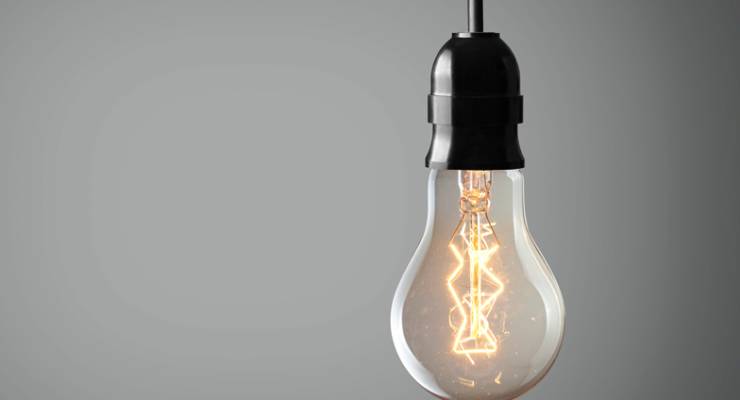
The world of innovation is mostly broken. I was just reading about the new Segway — the so-called “hoverboard”. Remember the old Segway? That curious ride-on podium with the hype-to-usefulness ratio through the roof?
Well, anyway, they have redesigned it so it is less bad, and that is apparently news.
The world is throwing more and more resources at “innovation”. The private sector funnels insane amounts of venture capital to Silicon Valley, and our government is doing all it can to nurture an Ideas Boom.
But we are doing it wrong. Too much money is going to the wrong things. It’s a tremendous waste.
Innovation is important. The explanation goes like this — in the long run, living standards are mostly explained by economic growth, which is mostly explained by productivity, which is mostly explained by the global technological frontier. And that technical frontier expands when new inventions come along.
(Getting close to the technological frontier can only be attained by those countries that have good education and decent institutions — a new patent on a touchscreen might be great for California but is irrelevant for rural Kenya. This is why properly funding education is crucial. But we will ignore this side of things for now).
Our current model of innovation is crowding too much money into too small a subset of innovation.
The problem in Silicon Valley is its (surprisingly non-diverse) workforce is very busy fixing problems they perceive as significant. So we get lots of car-hailing apps, airport time-saving apps and social network apps but not so many for managing your breast-feeding, your incontinence, your food stamps, etc.
The case of Theranos is another object lesson. A blood-testing company valued a few years ago at $9 billion has been revealed to be mostly a chimera — i.e, even when the venture capital finds a product that might remake the world for good, it is unable to manage the incentives right.
I’ve written previously about how the economically important innovations can be incremental and non-technical, and come from non-profit sources.
My current favourite example is the Big Bash League — new, absurdly popular, a big source of economic activity and completely outside the realm of things people think about when they discuss innovation.
I love the story of the rolling suitcase. When I was a child, a suitcase was a heavy thing shaped like a briefcase that you carried. They were dreadful. By the time I became an adult, nobody had them. A change swept through the industry on tiny little caster wheels, and the era of rolling luggage had arrived.
The idea was obvious, in retrospect. How many more such ideas are out there, waiting for the right Australian to hit upon them and take them to the world?
The TravelPro company (founded by an American 747 pilot who, in 1987, attached wheels to his suitcase, then sold his invention to his colleagues) is now a major luggage maker and a source of employment for many Americans.
A similar innovation has recently swept the water collection task in parts of Africa. As the rolling suitcase was invented by a pilot, so the Q-drum was invented by someone who lives in rural South Africa. Neither were T-shirt-wearing hipsters in “innovation hubs”.
Consider, also, the humble tent. In the 1970s, a tent was an unsteady triangular prism with wobbly vertical supports. Its sharp geometry seemed designed to maximise the ratio of material to interior area and its tendency to sag meant dew would drip on your face as the dawn chorus began.
Now tents have been revolutionised with dome designs that go up in a minute, need no guy ropes and are almost indestructible.
The world seems to me full of objects that haven’t been optimised and tasks that are harder than they need to be. Anything you have to teach yourself to do seems ripe for innovating. The typewriter keyboard is a prime example, but I reckon anything for which a “for Dummies” book is available is in need of a rethink.
The government is always busy trying to lift Australia’s productivity. But its obsession with tech-based solutions means we will be competing in rarefied air.
Australia, the nation that invented the world’s greatest washing line, might do just as well looking at old technology as new. The world is full of old inventions just waiting to be improved.








Couldn’t agree more. We desperately need economic and social innovation, to find better ways to equitably and sustainably manage the world’s resources. Slightly-less-crap Segways are not going to help with that.
I’m always reminded of Boromir-inspired memes:
One does not simply “Ideas Boom” their way to productivity…
Innovation has found its way into finances too – Kickstarter gave way to GoFundMe; they achieve prettymuch the same thing, but GoFundMe has no expectations or strings attached. Innovation in the field of social security, housing for the poor, ensuring food is abundant and cheap; all worthy causes that don’t involve beards.
There is still decent work being done in tech, but the big earners make frivolous bullshit. The current trend of just throwing a tiny mobile computer in everything produces a lot of junk. Computers are a great tool but the phrase ‘when all you have is a hammer everything looks like a nail’ has never been more appropriate.
Biggest technology disruptive innovation of the next century will be generating and storing distributed power. It will be bigger than the industrial revolution. Unlimited free power based on old technology that hasn’t changed much or hasn’t even been looked at with much seriousness as coal is so ‘cheap’. I think we know how our Liberal government thinks about this type of innovation.
Times a million Jason. The assumption that all innovation will come from the IT/Tech sector is laughable. The industry is the world leader in insularity.
Yes, the next great innovations are more likely to be lawn mowers than a device that tells me I just took a litre of milk out of the fridge. Actually, I already knew that, it didn’t help me one bit.
AndyC – agree except that we already have redistributive energy storage – it has been used by the Snowy Hydro for decades.
With the ubiquity of Pelsen wheels, the is hardly a home which could not more efficiently store excess PhV electricity as energy during the day in a water tower for use at night.